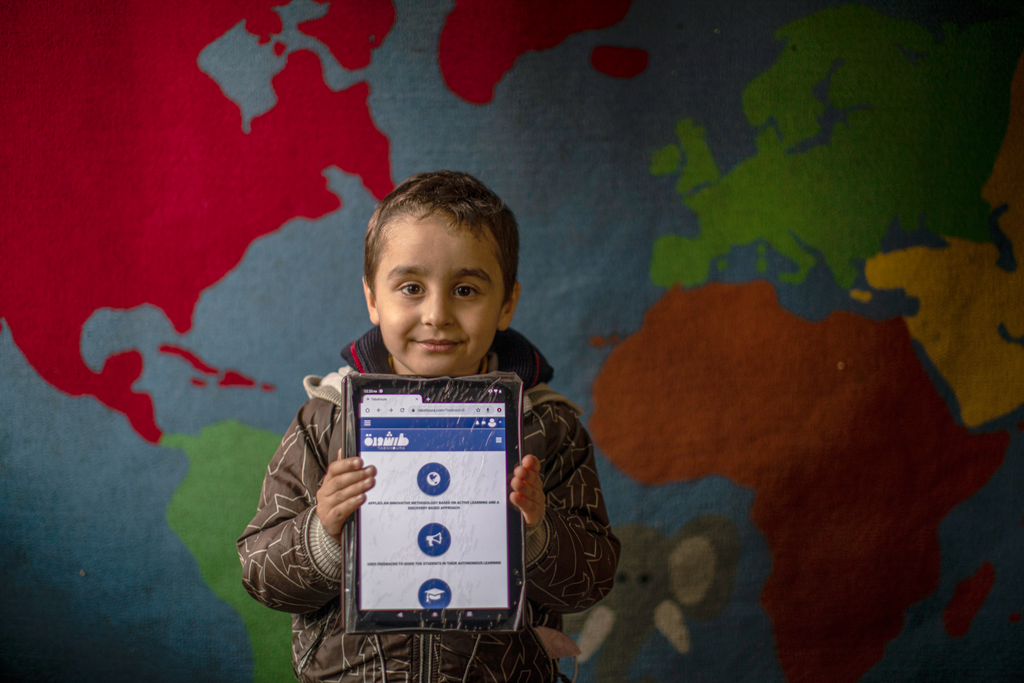
How Peru tackled malnutrition and growth crisis among children under five
Childcare, Early childhood development, Health and nutrition, Safe pregnancy and birth
Stunting among young children has been halved thanks to co-operation and a wide-ranging programme of health checks, funding and education.
A campaign of health checks, funding and education has managed to make a significant dent in Peru’s childhood stunting crisis.
The rate of children whose growth is impaired has been halved in less than a decade and, with better care and nutrition, even the poorest indigenous children are thriving.
Peru now has the best record of any country tackling malnutrition. Between 2007 and 2014, stunting among children under the age of five fell from 29% to 14%, according to Peru’s National Statistics Institute.
That happened because government ministries, regional governments, health professionals and NGOs worked together to reduce child stunting caused by chronic undernutrition.
As Theirworld’s #5for5 campaign on early childhood development has been highlighting, the first 1000 days in a child’s life are crucial. Children need nurturing care – including good nutrition – if they are going to develop to their full potential.
Those first 1000 days became the focus in Peru – and one of the key changes came with the Juntos (Together) scheme.
Backed by the World Bank, the scheme doubled health and growth check-ups for children in their first three years and school attendance for older children. In return, beneficiary families received a monthly cash payment of about $30 to the female head of the household.
The scheme, which began in 2005, operates in 22 of Peru’s 25 regions in rural areas, where poverty is more than 50%.
Alessandra Marini, a senior World Bank economist and leader of the Peru Juntos project between 2007 and 2016, said: “Juntos was the engine behind the change. It was critical because it was creating incentives for women.
“Pregnant and breastfeeding mothers were expected to attend antenatal and postnatal checkups and have a medically-assisted delivery.
“Families with children aged under five had to have regular checkups for growth monitoring, fortified complementary food and vitamin supplements, vaccinations and deworming.
Peru’s President, Pedro Pablo Kuczynski Godard, is proud of his country’s achievement.
He said: “We recognise that this is the result of efforts of successive governments that maintained an effective public policy.
“It relies on a joint strategy closely coordinated among the different levels of government, with the collaboration of several national and international institutions and organisations.
“Our country still faces major challenges, however, and we are committed to continuing this work.
Our government has proposed reducing chronic malnutrition in children from around 13% to 6.4% and anaemia from 43.6% to 19% between 2016 and 2021. In other words, our goal is to eliminate anaemia as a public health problem.
“If we want a developed country, our children must be well nourished. It is the only way to definitively break the cycle of poverty.”
The role of the World Bank has been key in the progress. Its President Jim Yong Kim said: “Stunting is a silent killer. It deprives children of their right to grow, to thrive and to prosper.
“Peru has shown the world that countrywide engagement can reduce stunting, creating a path towards a brighter future for all children.”
Helping children in the Andes
The charity Amantani – which works to defend the rights of indigenous children and young people in the Peruvian Andes – gave Their News access to research and a study into child malnutrition in Ccorca, which is in the mountainous Cusco region.
The report was written by researcher Carla Ballonga Paretas at the University of Barcelona and the conclusion was translated for us by Sara Perpinya.
It said: “We have observed that within a population of extreme poverty that includes a state programme of food aid, the risk of nutritional deficiency and of anaemia is lower than expected and the anthropometric development is quite adequate.
“However, there is a significant chronic malnutrition, probably due to a situation of nutritional deficiency in early development.
“Although a relationship between cognitive functioning and nutritional status has been found, low cognitive performance could also be attributed to other environmental or genetic factors.”
Amantani co-director Fred Branson said: “We enable children and young people from Quechua families to access high-quality education and fair employment, helping to stimulate social development for Peru’s rural communities.
“Our intercultural philosophy promotes social inclusion, while encouraging indigenous autonomy and cultural pride.”
More news

